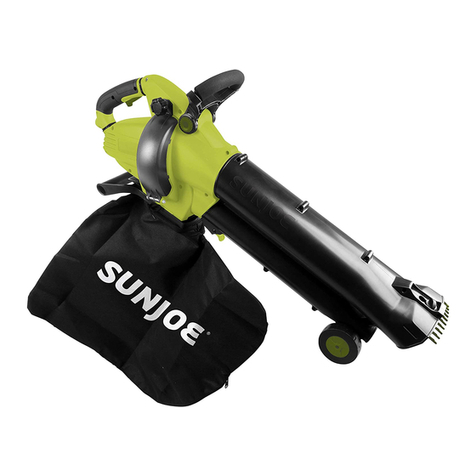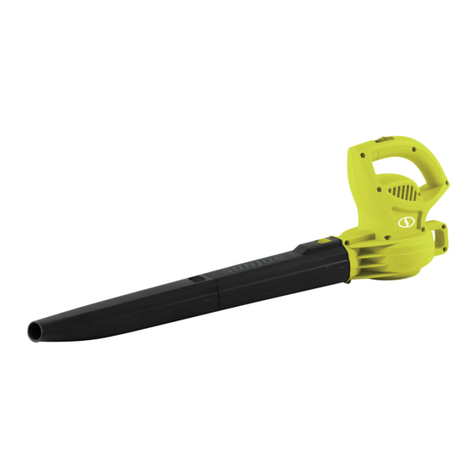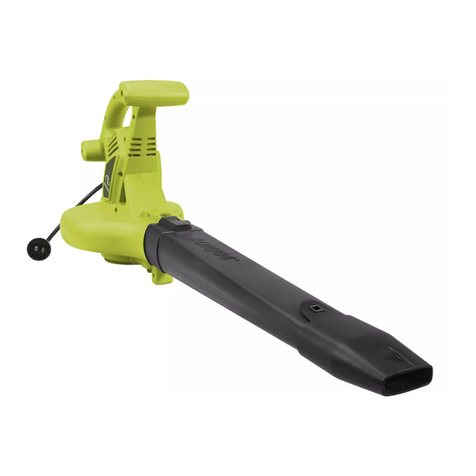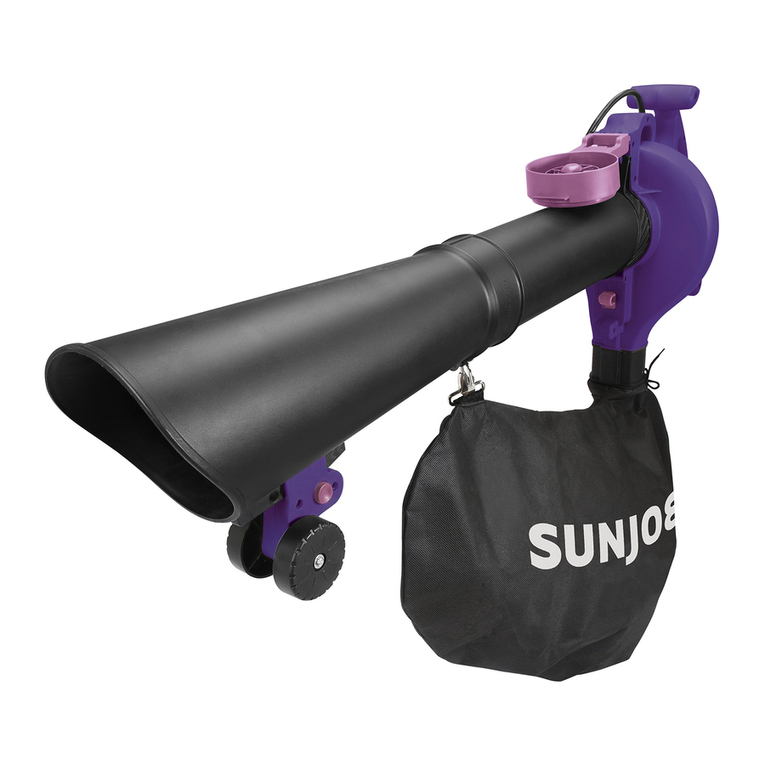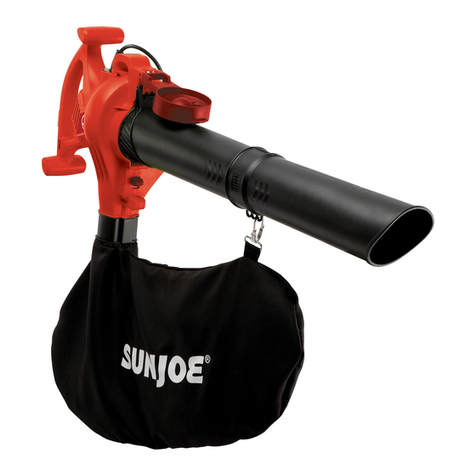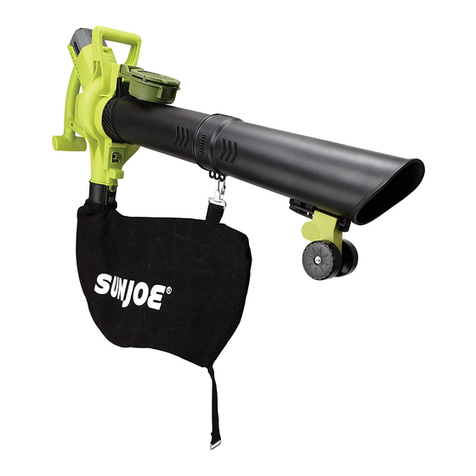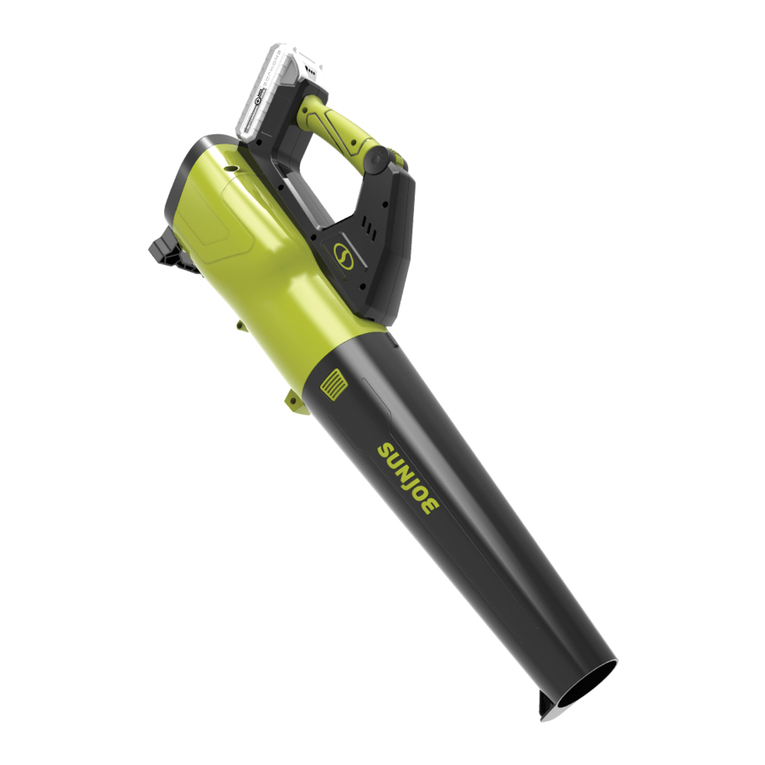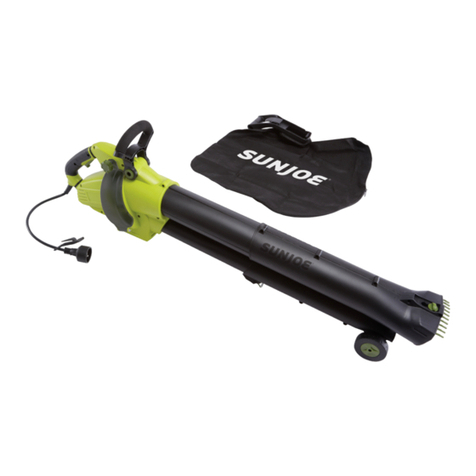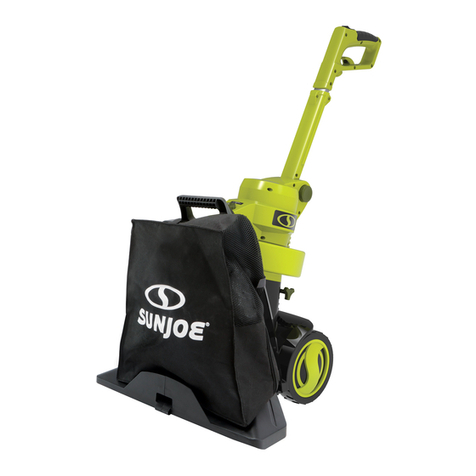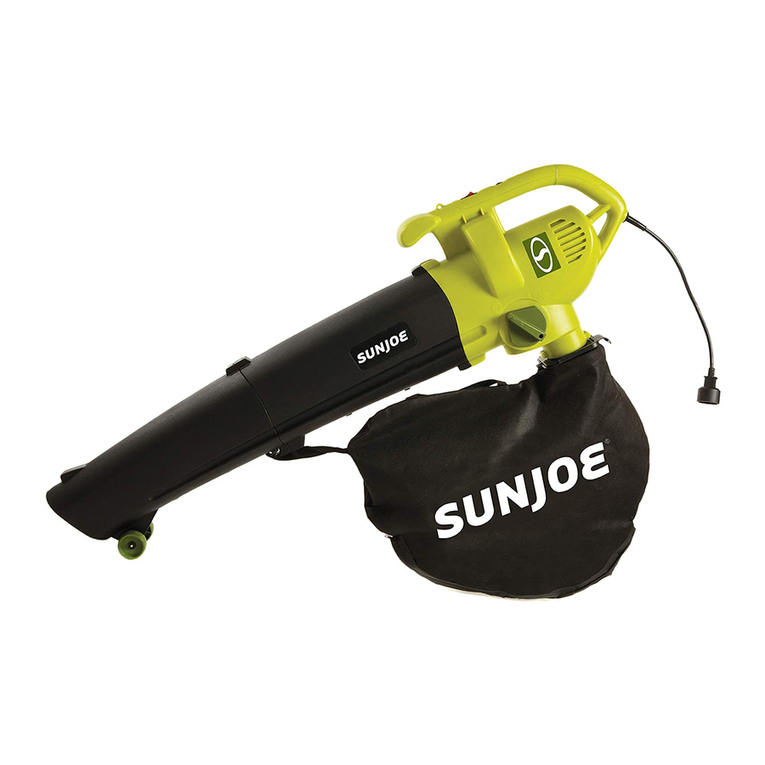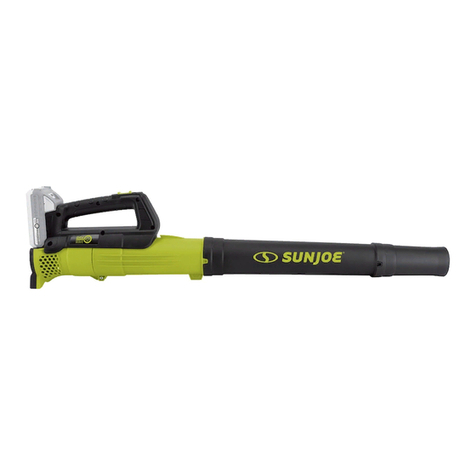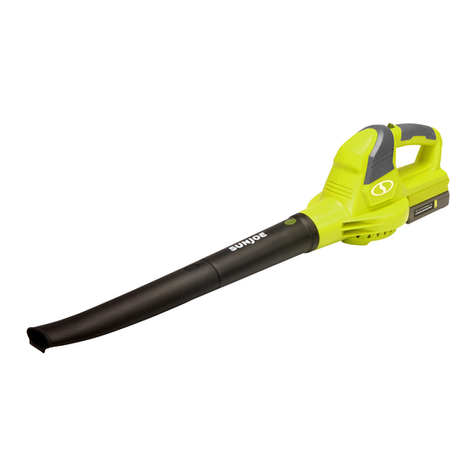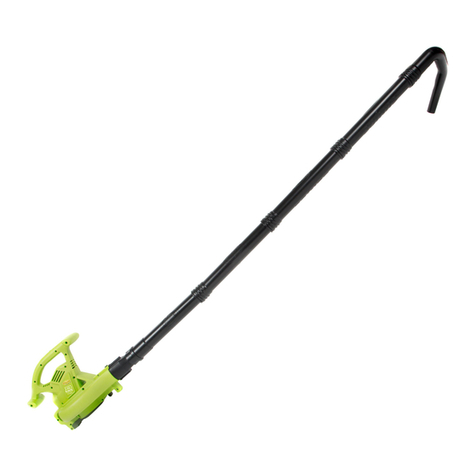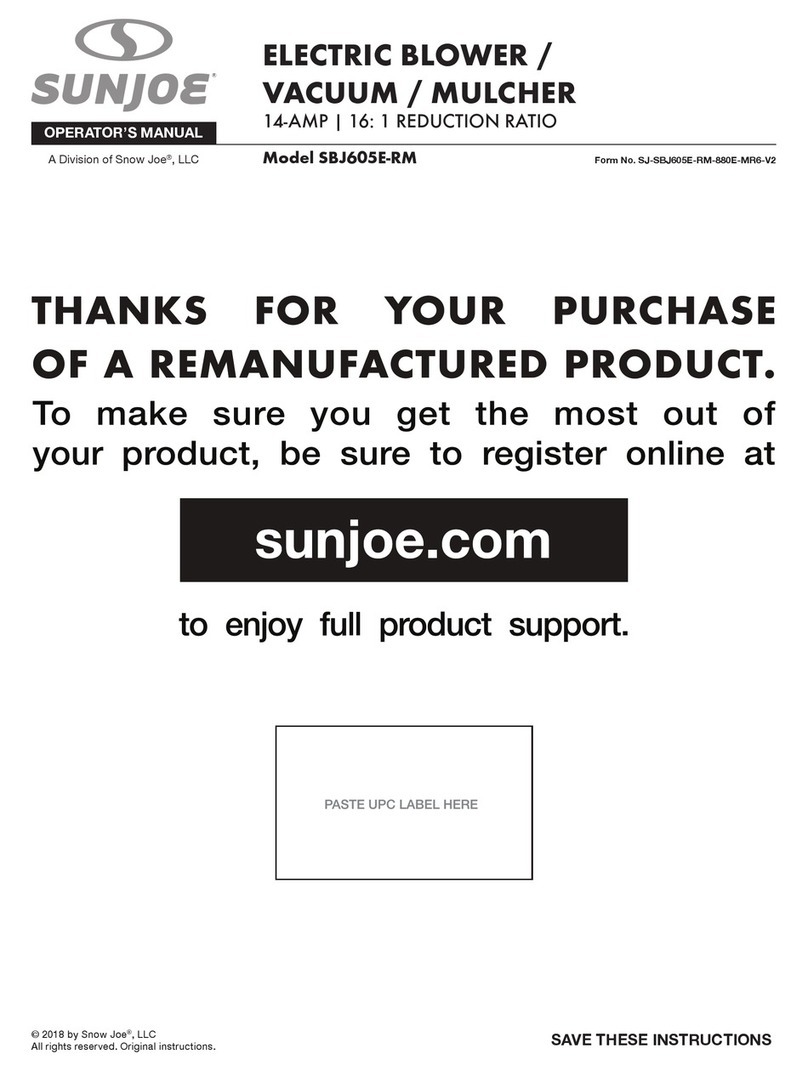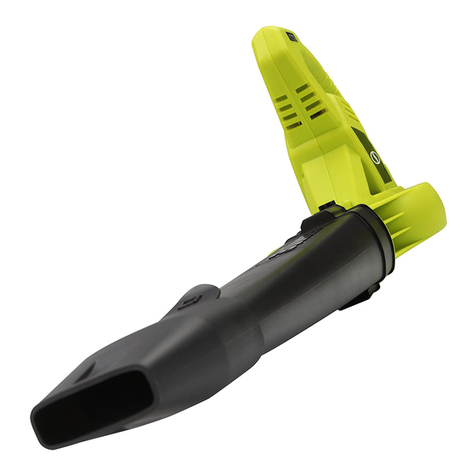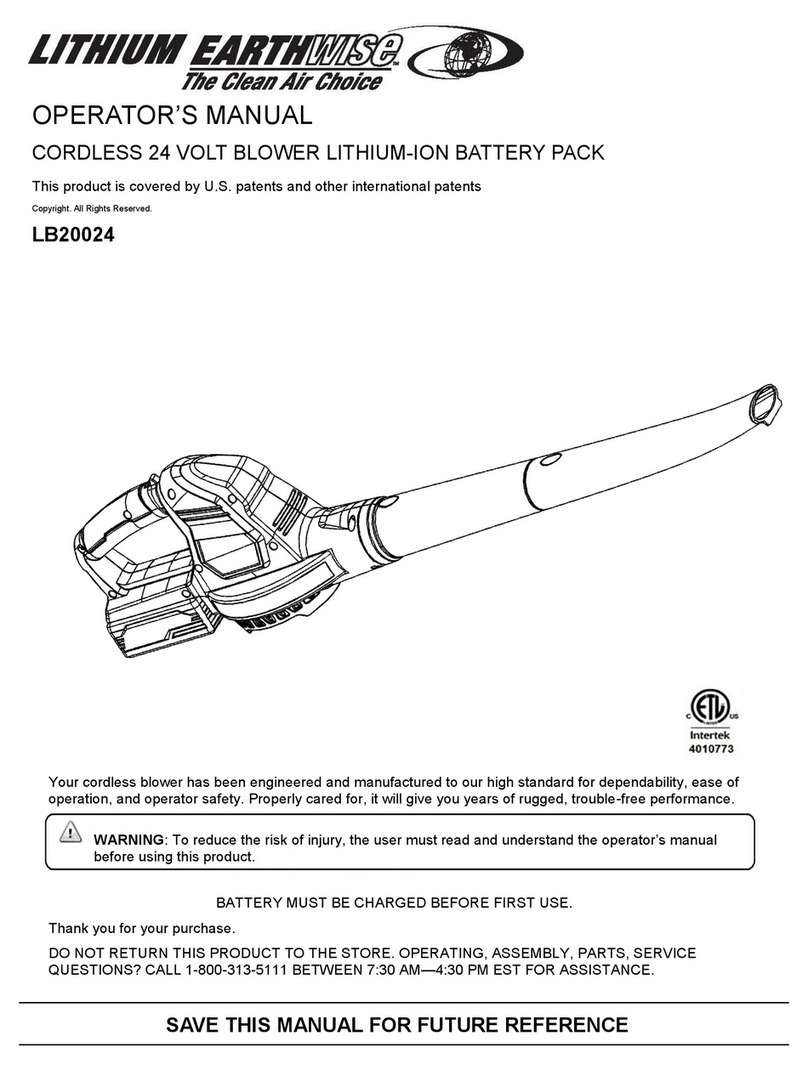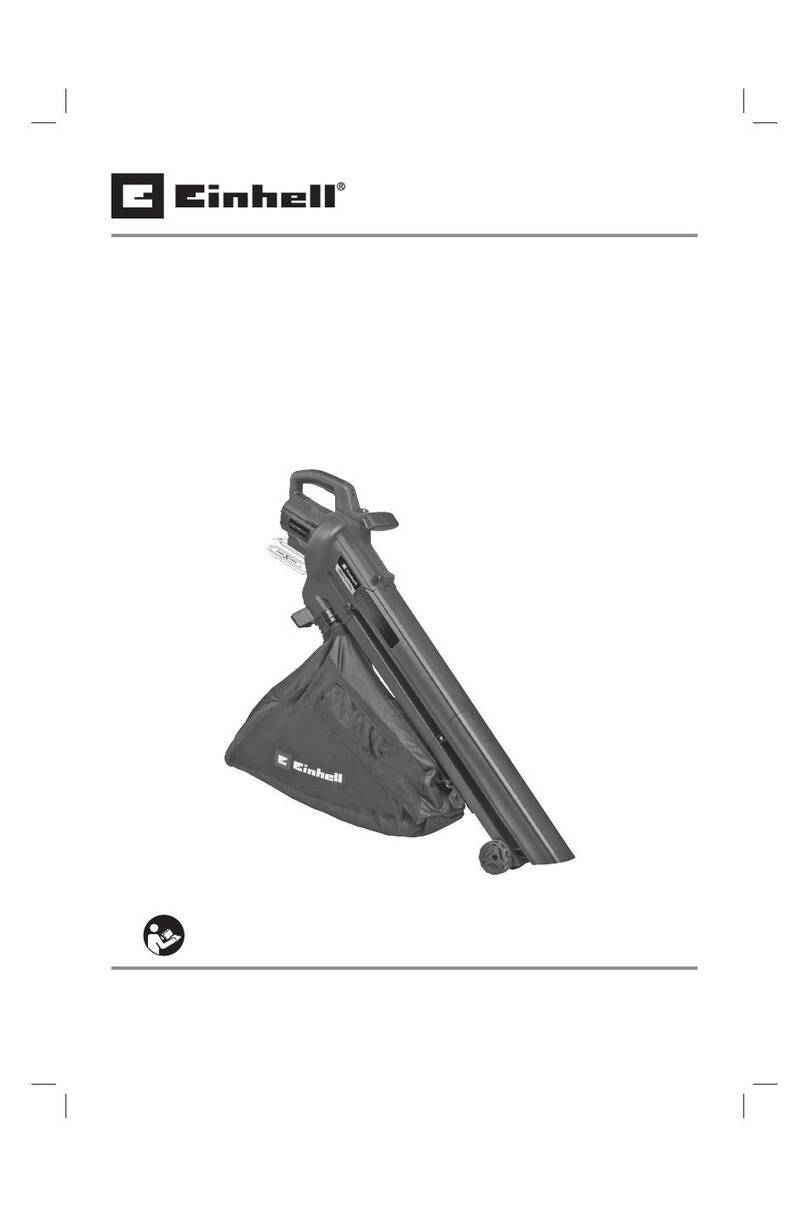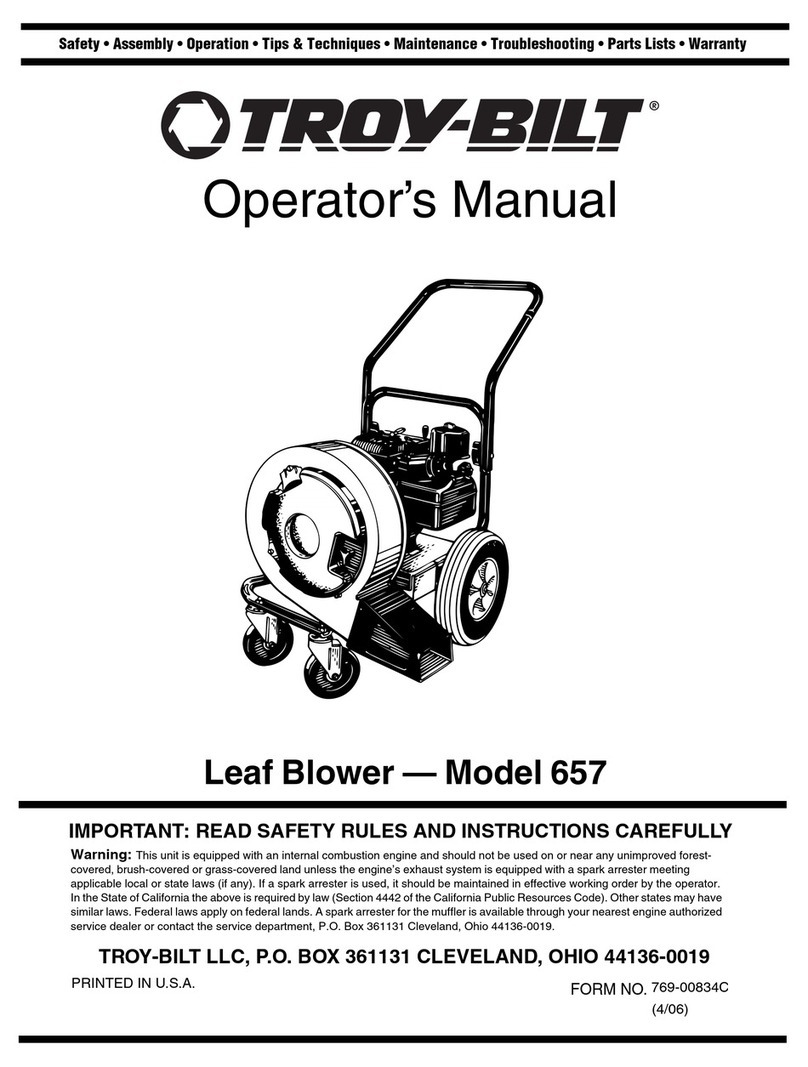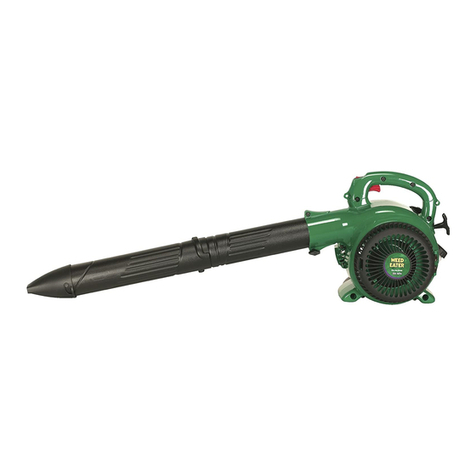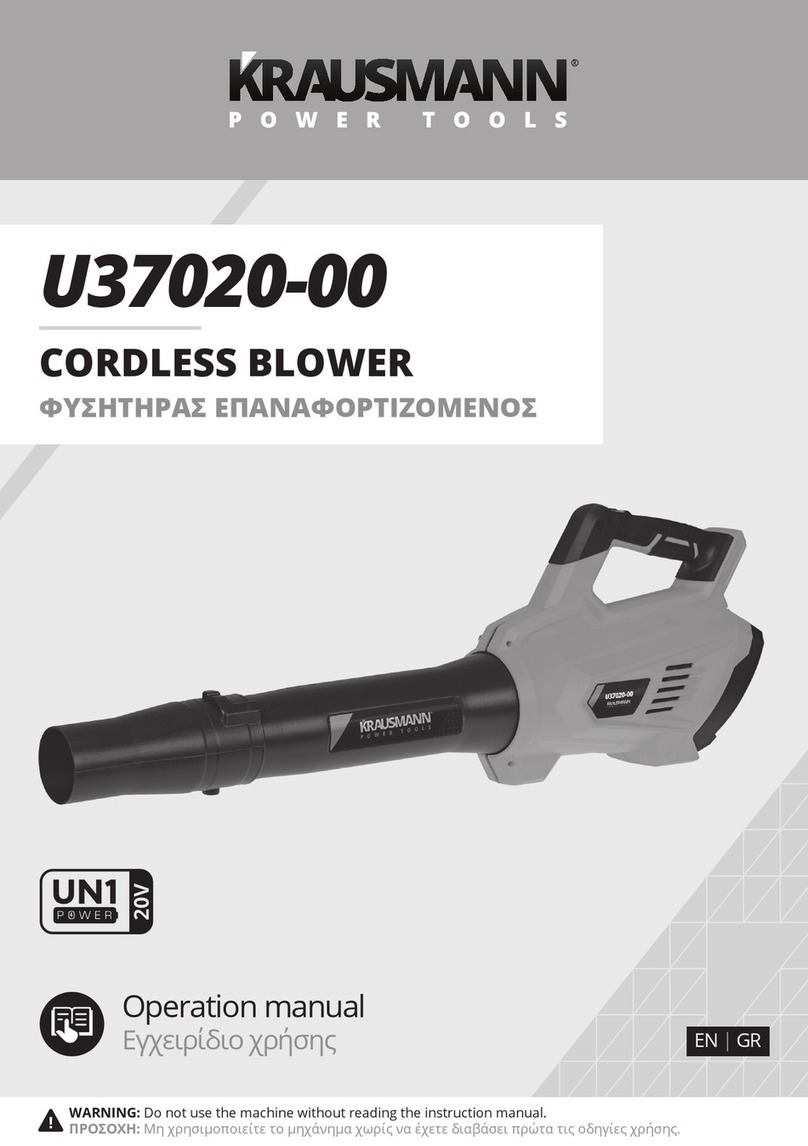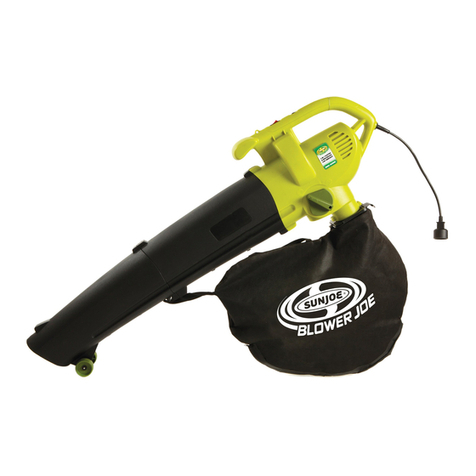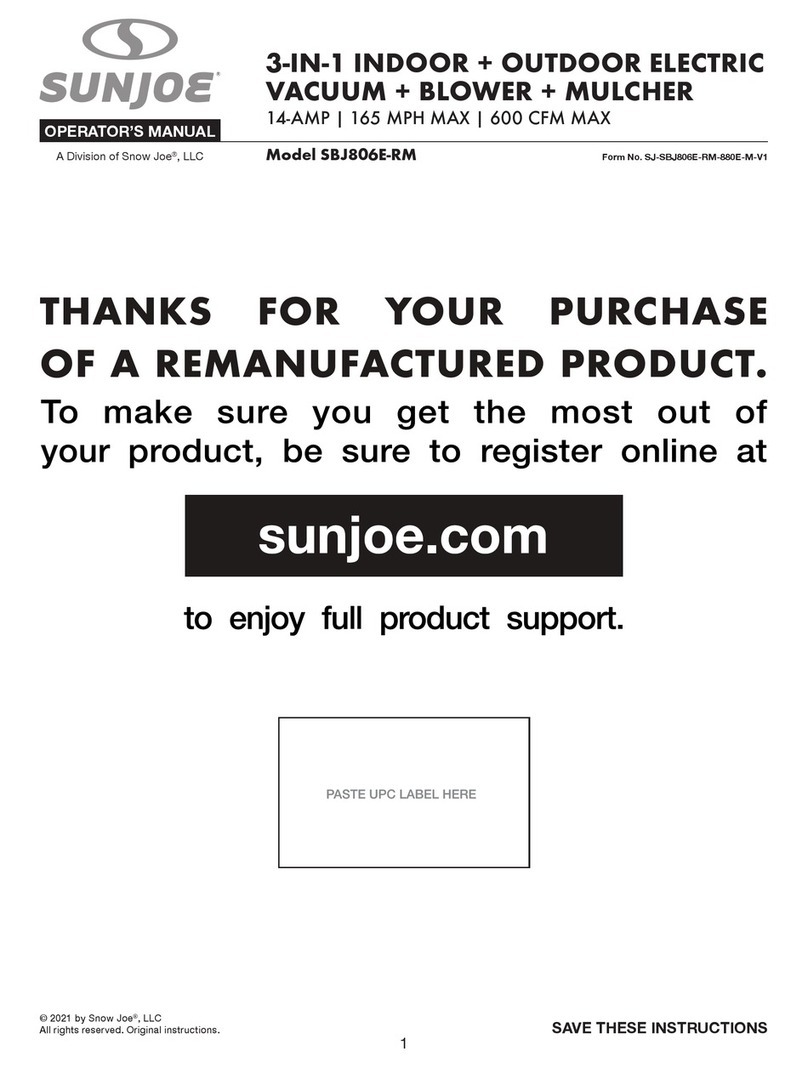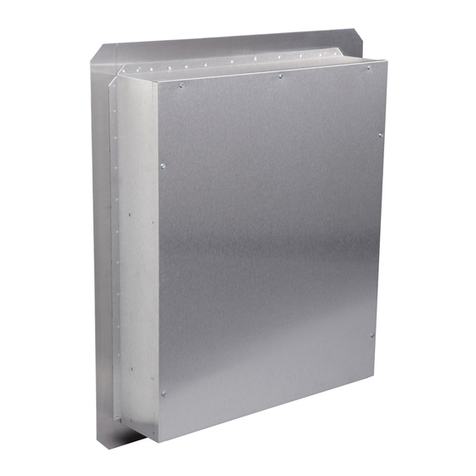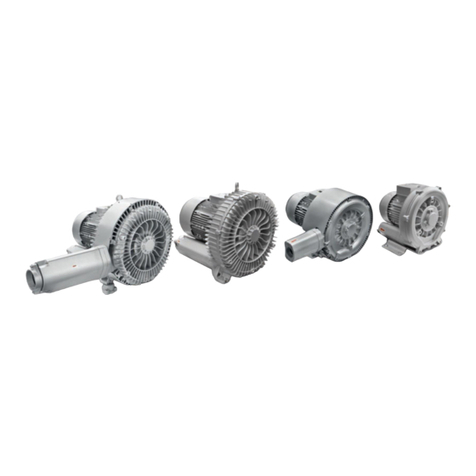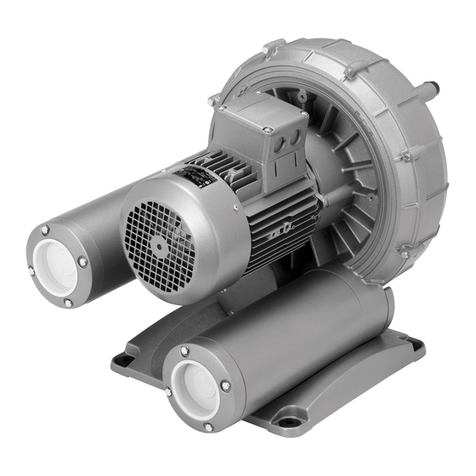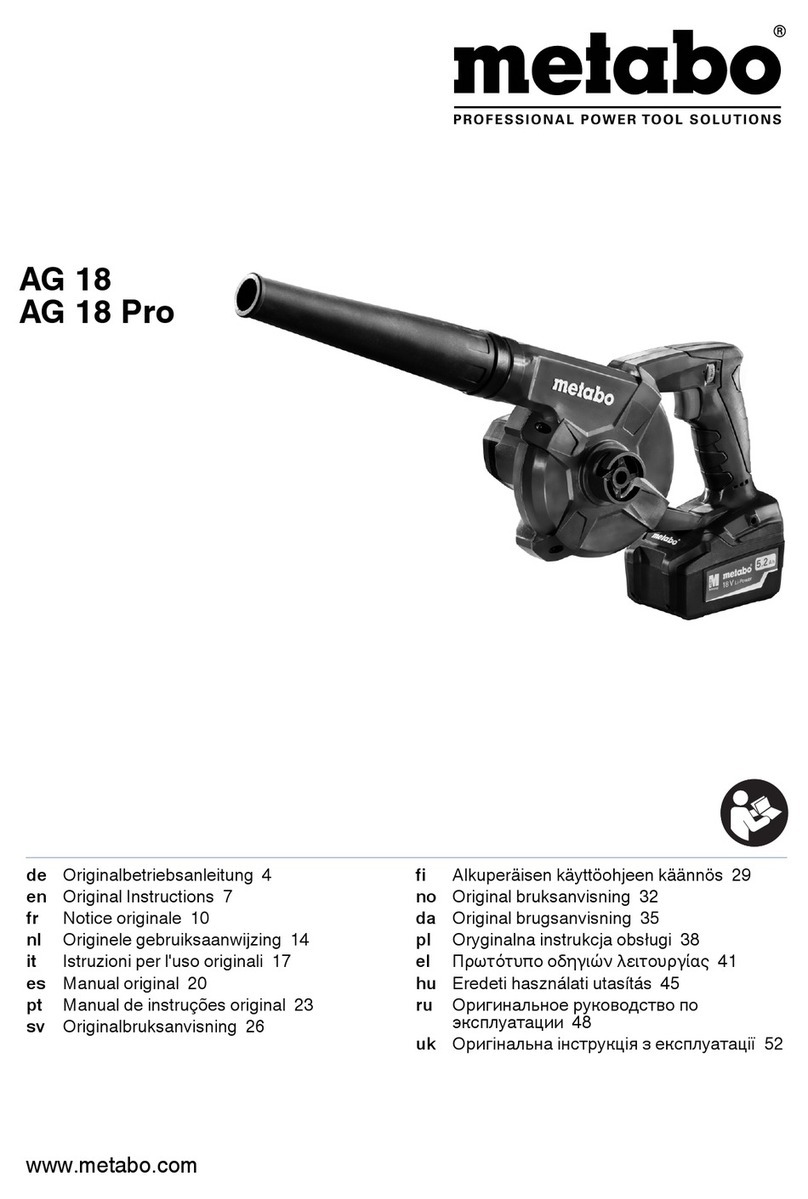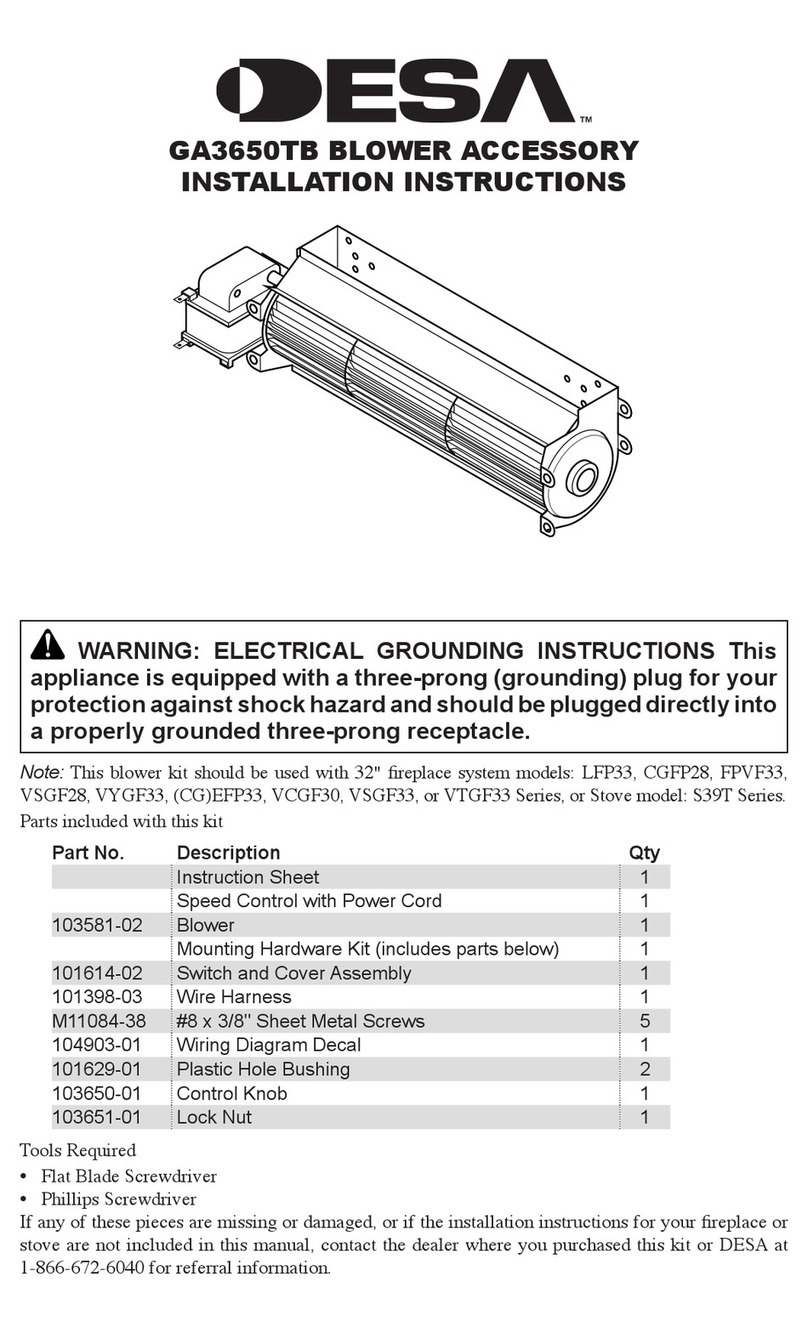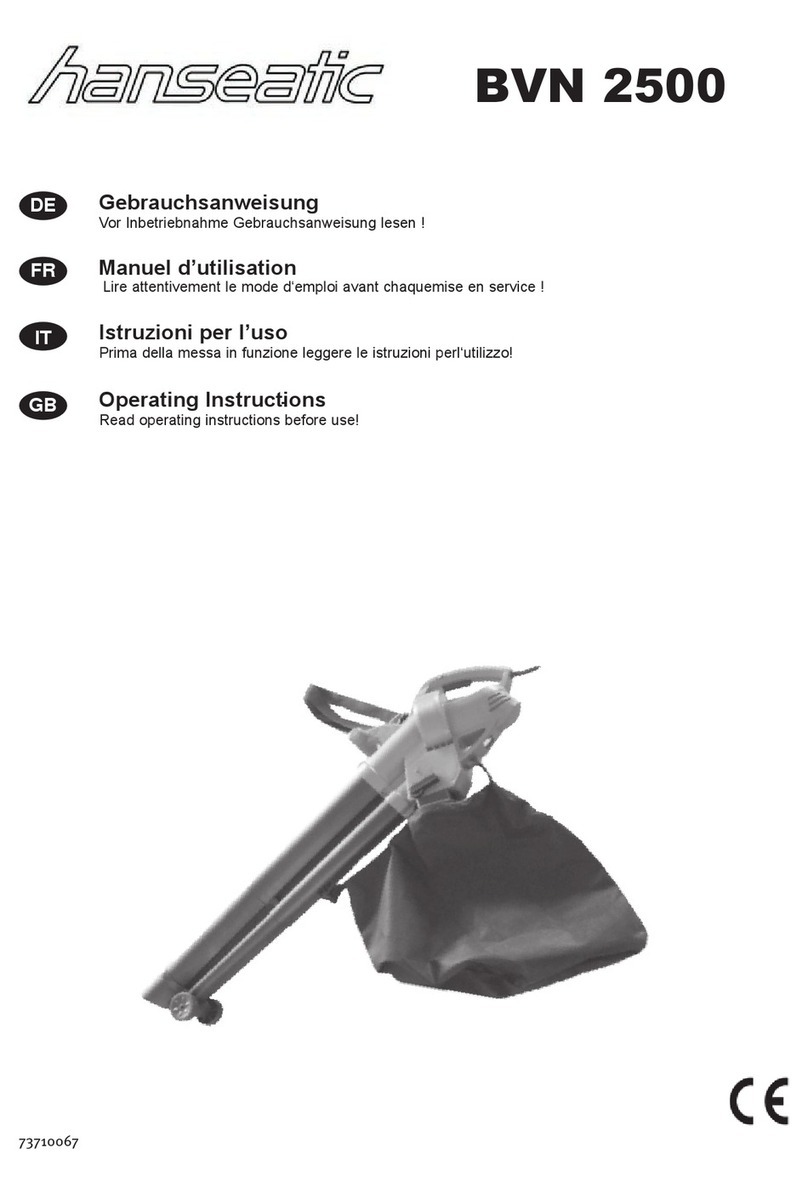
2
•
Keep rm footing and maintain good balance at all times. Do
not overreach. Overreaching can result in loss of balance.
• Turn o all controls before unplugging the tool.
• Do not use the tool if the power switch does not turn it ON
or OFF. Any tool that cannot be controlled with the switch is
dangerous and must be repaired.
• Carefully inspect your appliance prior to use and follow all
label and marking instructions.
• Keep all parts of your body away from any moving parts
and all hot surfaces of the unit.
• Do not put any object into the tool's openings. Do not use
the tool with any opening blocked; keep openings free of
dust, lint, hair, or any other object that may reduce air ow.
• Check the work area before each use. Remove all objects
such as rocks, broken glass, nails, wire, or string, which can
be thrown or become entangled in the machine.
• Service on the product must be performed by qualied
repair personnel only. Service or maintenance performed
by unqualied personnel could result in injury to the user or
damage to the product.
• This blower is intended for residential use only. Commercial
use of this product is prohibited and will void the
manufacturer's warranty.
• Never run the unit without the proper equipment attached.
Always ensure the blower tube is properly installed.
• Always grasp the handle when operating the unit,
only operate the machine in its intended orientation.
Specic Safety Rules For
Jet Blower
• The jet blower has been designed to clear light debris and
leaves from hard surfaces – not for clearing grassed areas.
• When operating the unit, never point the jet blower nozzle
in the direction of people or pets or in the direction of
windows. Use extra caution when blowing debris near solid
objects, such as trees, automobiles, and walls.
• Be sure to secure the unit when transporting it.
• Never douse or squirt the unit with water or any other liquid.
Clean the unit after each use as described in the cleaning
and storage section.
Battery & Charger
Safety Instructions
NOTE: This unit is the tool only. The battery and the charger
are not included. They must be purchased separately.
Model 24V-TB-CT is compatible with the 24V iON+ System
batteries and chargers. See page 12 for more information.
We pay a great deal of attention to the design of every battery
pack to ensure that we supply you with batteries that are safe,
durable and have a high energy density. The battery cells have
a wide range of safety devices. Each individual cell is initially
formatted and its electrical characteristic curves are recorded.
This data is then used exclusively to be able to assemble the
best possible battery packs.
Despite all the safety precautions, caution must always be
exercised when handling batteries. The following points must
be obeyed at all times to ensure safe use. Safe use can only
be guaranteed if undamaged cells are used. Incorrect handling
of the battery pack can cause cell damage.
IMPORTANT! Analyses conrm that incorrect use and poor
care of high-performance batteries are the main factors
responsible for personal and/or product damage.
mWARNING! Use only approved replacement batteries;
other batteries may damage the jet blower and cause it to
malfunction.
mCAUTION! To reduce the risk of injury, charge the
24V iON+ lithium-ion battery pack only in its designated
24V iON+ lithium-ion charger. Other types of chargers present
risk of re, personal injury and damage. Do not wire a battery
pack to a power supply plug or car cigarette lighter. Such
misuse will permanently disable or damage the battery pack.
• Avoid dangerous environments – Do not charge the
battery pack in rain, snow or in damp or wet locations.
Do not use the battery pack or charger in the presence of
explosive atmospheres (gaseous fumes, dust or ammable
materials) because sparks may be generated when inserting
or removing the battery pack, which could lead to a re.
• Charge in a well-ventilated area – Do not block the
charger vents. Keep them clear to allow for proper
ventilation. Do not allow smoking or open ames near a
charging battery pack. Vented gases may explode.
NOTE: The safe temperature range for the battery is
41°F – 105ºF (5°C – 40.5°C). Do not charge the battery
outside in freezing weather; charge it at room temperature.
• Maintain charger cord – When unplugging the charger,
pull the plug, not the cord, from the receptacle to reduce
the risk of damage to the electrical plug and cord.
Never carry the charger by its cord or yank it by the cord
to disconnect it from the receptacle. Keep the cord away
from heat, oil and sharp edges. Make sure the cord will not
be stepped on, tripped over or subjected to damage or
stress when the charger is in use. Do not use the charger
with a damaged cord or plug. Replace a damaged charger
immediately.
• Do not use an extension cord unless it is absolutely
necessary – Using the wrong, damaged or improperly
wired extension cord poses a risk of re and electric shock.
If an extension cord must be used, plug the charger into a
properly wired 16 gauge or larger extension cord with the
female plug matching the male plug on the charger. Make
sure that the extension cord is in good electrical condition.
•Check the rated input for the charger before using –
The charger must be plugged into an appropriate
receptacle.
• Use only recommended attachments – Use of an
attachment not recommended or sold by the battery
charger or battery pack manufacturer may result in risk of
re, electric shock or personal injury.
• Unplug charger when not in use – Make sure to remove
battery packs from unplugged chargers.
